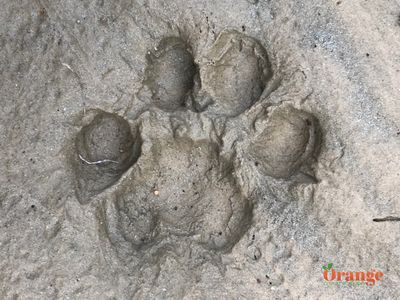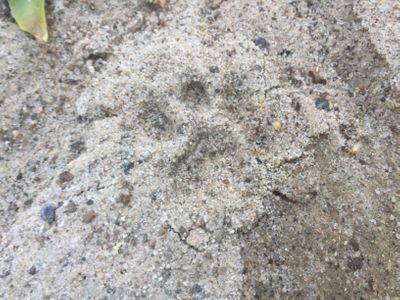Species Spotlight: Bobcats
- Anya Shram
- Feb 14
- 5 min read

Local Habitats:
Bobcats, or Lynx rufus, are cat-like animals that look sweet and cuddly, but are actually wild and are great hunters. Bobcats are found in Orange County, in particular the Santa Ana Mountain Range, wilderness areas, and regional parks (OC Outdoors). Suitable habitats for bobcats in California are places that include chaparral vegetation, oak or low to mid-elevation conifer (trees that bear cones and have needle-like leaves) forests, riparian (transitional area between land and water), and even desert environments (CA Department of Fish and Wildlife).
Since they have a healthy population in the Santa Ana Mountain Range, bobcats are not considered rare. According to the conservation status which determines a species' risk of extinction, they are classified as a species of least concern. They are shy towards humans and are primarily nocturnal, hunting their prey at night (Maine Department of Inland Fisheries and Wildlife). Bobcats are not considered a threat to humans; however, they should not be approached since many animals attack if they feel threatened and scared, especially if they are protecting their young.
Biology:
Bobcats have a smaller frame compared to mountain lions. They are considered small to medium-sized, two feet or under, and weigh 12 to 25 pounds (CA Department of Fish and Wildlife). Mountain lions can weigh up to 90 pounds and 8 feet long, as a comparison. A good way to think about their size is comparing it to a beagle or a French bulldog which have roughly the same height and weight. They have muscular bodies, large ears with pointed ear tufts, and fur that can be either light brown or orange with black spots and black face markings. They are also known for their short bobbed tail, for which they are named.

Although you may not see a bobcat in the wild (since they are likely hiding or sleeping), their print is easily distinguishable. Their paw prints are about twice the size of a house cat’s and have no claw marks, since, like house cats and mountain lions, they retract their nails into their paws. If you see nails, you are likely seeing a coyote or dog print, species that can’t retract their claws. Bobcats are often difficult to recognize by sounds because they use a variety of calls. Some of these might range from a scream-like meow, to growling, or hissing. Bobcats are also solitary animals which explains their hunting style.
Bobcats are very good climbers and use this as an advantage to get higher ground on their prey. They can also run up to 30 miles per hour while humans can only run up to around 20 miles per hour for short periods of time, and mountain lions can reach speeds of 45 miles per hour. They are also often confused with other Lynx species. Lynx live in colder, more northern areas and have longer and bigger paws which help them travel through the snow. (Smithsonian’s National Zoo).
The above pictures show examples of Bobcat paw prints, both slightly bigger than 1.5 inches (PC: OC Outdoors).
Diet:
A bobcat's diet is mostly carnivorous and consists of the many animals local to Orange County habitats, such as rabbits, rodents, raccoons, birds, reptiles, insects, and even deer fawns. Bobcats are stealthy hunters who stalk or ambush their prey from either the ground or a high point, like a tree. They can also go after small farm animals, such as chickens. (CA Department of Fish and Wildlife).
Another interesting fact about bobcats, and a testament to their great hunting abilities, is that they can kill prey up to eight times their body weight if other smaller prey is limited. Along with being great climbers, bobcats can leap up to about 10 feet. When abandoned or found injured, domestic cats have been known to care for orphaned bobcat kittens. Because of their amazing physical abilities and hunting skills, Native Americans have viewed bobcats as powerful spiritual animals that represent clear vision in dark places, patience, and vigilance. They are often paired with coyotes to represent the theme of duality. (OneKind Planet).
Mating and Offspring:
Bobcats, like many other cats, are pretty solitary animals with the exception of mating for a short period of time. Female bobcats usually have litters of three kittens between April and July and have their kittens in caves or hollow trees. The kittens stay with their mother for 7 to 12 months. They also may stay with their mother through the winter if there is enough food (Wildlife Rescue League). This lengthy process is when the mother teaches her young how to stalk their prey. They accompany their mother on trails around 11 to 12 weeks old in order to learn from her signals and visual cues on hunting and staying alert. A bobcat’s life span can range up to 12 years in the wild, but is more commonly about 4 years. Bobcats’ predators include mountain lions, owls, foxes, and humans (Arizona-Sonora Desert Museum). Bobcat kittens are more vulnerable to predation since they have less power to defend themselves.

Safety and Species Protection:
It is important when you see a bobcat that you give it space and slowly walk away. Starting from January 1, 2020, bobcats can no longer be hunted or trapped as they have been for their fur according to FGC Section 4155 (California Department of Fish and Wildlife). The only exception, under a permit, is if a bobcat is harassing or killing pets and livestock on a person's property. Keeping your distance when you see them or are in their habitat is the first step to helping bobcats and giving them their wanted solitary space. And remember that feeding wildlife can attract bobcats to your home, never leave small pets or children outside unattended, and make sure small livestock is properly secured (CA Department of Fish and Wildlife).
Research:
There are also monitoring projects going on that collect scat samples, camera footage, and prints to get informed data that tracks the bobcat population in California. The California Department of Fish and Wildlife was tasked by the State Legislature to conduct these statewide assessments. The purpose is to track populations and ensure they are healthy and contributing to their ecosystem.
Call to Action:
There are some things that residents can do to help protect bobcats. Similar to helping other species, residents can avoid using rodenticides, keeping pets inside, and driving slowly around wildlife areas especially at dawn or dusk. Keeping your backyard and environment clean on hikes or walks can also help bobcats. Avoid feeding wild bobcats if you do encounter one as well. These small actions can help bobcats and other native wildlife in the long run.
Sources:







Comments